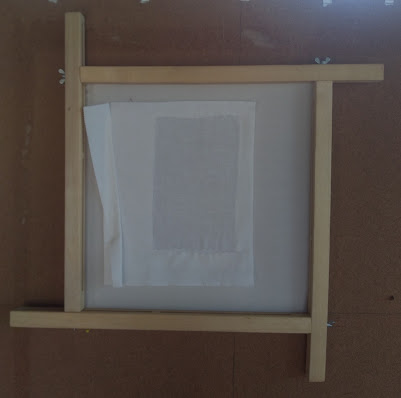An Overview
Fabric, art medium, and wetting or binder agents all work together to produce the results you want to achieve. Therefore, before attempting a final rendition, I experiment and explore as many variables as I can think of to reach my goal: Which as always is, Whatever Works.
With a nod to my memory loss/learning disability, I document the results with notes, photos, and swatches, and those images will be shared with you as soon as Google lets me.
When I embarked on a search for tutorials and information, I was frustrated by the limited data in support of the recommended methods being presented. In the spirit of giving too much information rather than too little, I will explore the subject in depth. It will be too much information, too much reading, for some. For those folks I say - you never know when you will need that information in the future.
About Fabric:
Each piece of fabric is unique. Notable differences in cotton fabrics are
- Spinning and weaving methods
- Finishing or sizing
- Size of the thread
- Number of threads in the warp and weft
- The "hand" - is it soft or firm to your hand?
Thus, I play around with the fabric I intend for my finished piece to discover what works, and what needs more work.
I tested Kona and Batik to see if there was a big difference in the weave, by scanning a swatch of each at 600 dpi. Batik (bleached) fabric is a much tighter weave than good quality quilting cotton. I'll use Kona or another quilting cotton for needle-turned appliqué and bleached Batik for raw-edge or appliqué that will be ironed on.
Considerations:
The fabric must allow for absorption of the wetting agent, whether water, gel, or fabric medium, while not absorbing so readily that bleeding occurs. I found that stretching the fabric on my adjustable stretcher bars (stitched to a larger cloth that has a window cut out for the painting) allows me to check the back side for good penetration.
Bleeding vs. Blending:
Bleeding is when the wetting agent spreads beyond the intended line.
Blending is what happens when a stroke picks up color from the surface and lays it down on the next stroke. I keep a piece of toweling and water handy to clean the brush often.
Resists: Starch, dried Gel, or other things that prevent the fabric from absorbing the ink.
Over-starched fabric will not allow the absorption of dye and wetting agent well enough for making the image "wash-fast." Some fabric sizing is enough to 'hold the line' but may not allow for maximum absorption
Additionally, Aloe gel that is applied and allowed to dry acts as a resist, much the same as heavy starch:
I thought I would 'set' the lightest color with gel before proceeding with a darker color to prevent unwanted blending. Then the 'aha moment' came and I tested a piece of fabric with and without gel, and color on top of gel on color. Any color applied over dried gel washed away easily. There was some staining, which tells me I can't rely on the gel as an intentional resist. Fortunately, because my piece was stretched in a frame, I was able to wash out the gel without losing all of my traced lines. We will talk about options for tracing the design to the fabric later.
How can I use this to my advantage? Let's explore the ways . . .










